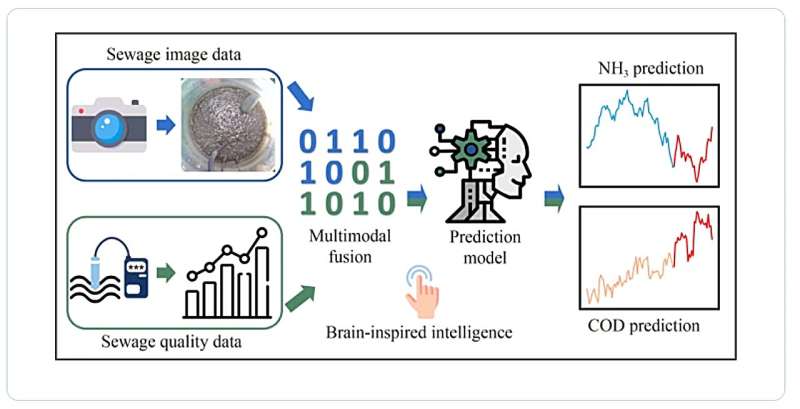
Wastewater treatment plants (WWTPs) play a crucial role in environmental protection by mitigating risks to public health and aquatic ecosystems through the prevention of pollutant release. Accurately predicting effluent quality, especially levels of ammonia nitrogen (NH3) and chemical oxygen demand (COD), is essential for ensuring water safety and enhancing the efficiency of WWTPs. Despite advances in data-driven methods, persistent challenges arise from the complexity of wastewater data.
A study, published in Frontiers of Environmental Science & Engineering on 10 November 2023, has explored brain-inspired hybrid models that merge CNN and LSTM to enhance prediction accuracy by leveraging multimodal data fusion techniques that mimic the human brain's processing capabilities. These innovative approaches aim to improve the accuracy and efficiency of predictive models, marking a significant stride in effluent quality prediction.
In this study, researchers developed the Brain-Inspired Image and Temporal Fusion (BITF) model with a CNN-LSTM network, designed to enhance effluent quality prediction by analyzing wastewater surface images and water quality data. Utilizing an overhead camera and water quality sensor arrays, the study captured synchronized high-resolution images and monitored crucial water quality indicators such as COD and NH3.
At the core of this study, the BITF module emulates the human brain's data processing capabilities, integrating image and water quality data through a self-attention mechanism. Coupled with the VGG11 network for image feature extraction and an adaptive feature fusion method, this mechanism effectively prioritizes and fuses multimodal data, significantly improving prediction accuracy.
The model's effectiveness was demonstrated through superior performance in benchmarks against traditional models and evaluated using metrics like Root Mean Square Error, Coefficient of Determination, and Mean Absolute Percentage Error. The study's innovative approach, which combines artificial intelligence with environmental engineering, not only sets a new standard in effluent quality prediction but also paves the way for future advanced wastewater management research.
Yongzhen Peng, one of the corresponding authors, stated, "This research marks a pivotal advancement. By emulating the brain's data processing prowess, we've developed a system that significantly outperforms traditional methods, promising a new era in effluent quality management."
The BITF-CL model demonstrated remarkable prediction accuracy, surpassing existing models in benchmark tests. Such precision in effluent quality prediction aids not only in regulatory compliance but also reduces dependency on expensive sensors, potentially lowering operational costs. This approach could revolutionize wastewater treatment monitoring and management by offering more precise, cost-effective, and efficient solutions.
More information: Junchen Li et al, Brain-inspired multimodal approach for effluent quality prediction using wastewater surface images and water quality data, Frontiers of Environmental Science & Engineering (2023). DOI: 10.1007/s11783-024-1791-x
Provided by TranSpread
Citation: Brain-inspired model enhances wastewater treatment predictions (2024, January 11) retrieved 11 January 2024 from https://techxplore.com/news/2024-01-brain-wastewater-treatment.html
This document is subject to copyright. Apart from any fair dealing for the purpose of private study or research, no part may be reproduced without the written permission. The content is provided for information purposes only.
